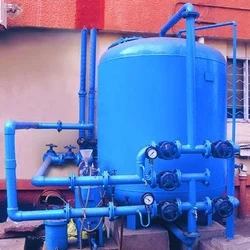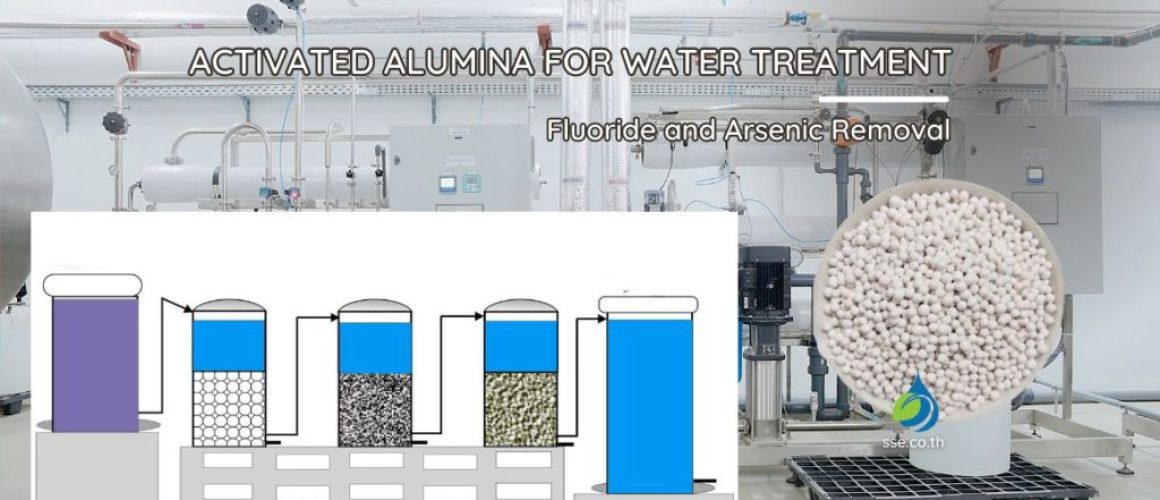Activated Alumina Water Treatment: Fluoride and Arsenic Removal
| Key Aspect | Details |
|---|---|
| Primary Uses | Removal of contaminants like fluoride, arsenic, selenium, and phosphates from water |
| Industries Served | Municipal water treatment, industrial wastewater management, and environmental protection |
| Main Benefits | High adsorption capacity, effective contaminant removal, safe and reliable for potable water |
| Efficiency Factors | Optimal pH levels, regeneration capability, customizable adsorption properties |
| Environmental Impact | Non-toxic and environmentally friendly option for water treatment |
| Performance Optimization | Regular regeneration extends lifespan, ensuring consistent adsorption effici |
Table of Contents
Introduction
Activated alumina is widely used in water treatment processes, specifically for removing fluoride and arsenic contaminants from drinking water. In this article, we will discuss the properties of activated alumina, how it works in water treatment, and the advantages and disadvantages of using this material.
What is Activated Alumina?
Activated alumina is a highly porous form of aluminum oxide that serves as an effective adsorbent in various applications. It is produced by heating aluminum hydroxide, resulting in a highly porous and absorptive material with a large surface area. The high porosity and surface area make it an ideal material for adsorbing impurities from water and other fluids.
The Role of Activated Alumina in Water Treatment
The importance of activated alumina in water treatment processes and water purification lies in its adsorption capabilities. Adsorption is the process by which molecules or ions adhere to the surface of a solid material, in this case, activated alumina. This process is highly effective in removing impurities from water, such as fluoride and arsenic, which can be harmful to human health when present in excessive amounts.

Fluoride Removal
A. The Problem with Excess Fluoride in Drinking Water
Excessive fluoride in drinking water can lead to health problems, such as dental fluorosis, which causes discoloration and mottling of the teeth, and skeletal fluorosis, which can cause pain and damage to bones and joints. As a result, it is necessary to remove excess fluoride from the water supply to ensure safe drinking water.
B. How Activated Alumina Removes Fluoride
Activated alumina effectively removes fluoride through a process called adsorption, where fluoride ions are attracted to and held on the surface of the alumina particles. As water passes through a bed of activated alumina, the fluoride ions are adsorbed onto the alumina’s surface, effectively reducing the fluoride concentration in the water.
C. Factors Affecting Fluoride Removal Efficiency
Several factors influence the efficiency of activated alumina in removing fluoride, such as pH levels, water temperature, and contact time. A lower pH level typically results in higher fluoride removal efficiency, while higher temperatures can reduce the effectiveness of the process. Additionally, longer contact time between the water and the activated alumina increases the amount of fluoride removed.
Arsenic Removal
A. The Dangers of Arsenic in Drinking Water
Arsenic contamination in drinking water can cause severe health issues, including skin lesions, cancer, cardiovascular diseases, and neurological disorders. The World Health Organization (WHO) has set a guideline value of 10 µg/L for arsenic in drinking water, making it crucial to remove arsenic from water sources.
B. How Activated Alumina Removes Arsenic
Activated alumina can effectively remove arsenic from water through a similar adsorption process as it does with fluoride. As water passes through the activated alumina bed, arsenic ions are adsorbed onto the surface of the alumina particles, reducing the arsenic concentration in the water.
C. Factors Affecting Arsenic Removal Efficiency
As with fluoride removal, factors such as pH levels, water temperature, and contact time influence the efficiency of activated alumina in removing arsenic. Optimal pH levels for arsenic removal typically range from 5 to 6, while higher temperatures may reduce the effectiveness of the process. Longer contact time between the water and the activated alumina also increases the amount of arsenic removed.
Advantages and Disadvantages of Activated Alumina Water Treatment
Using activated alumina for water treatment has several advantages and disadvantages. One of the main advantages is its effectiveness in removing fluoride and arsenic from water sources, providing a safer and healthier supply of drinking water. Additionally, activated alumina is relatively inexpensive and has a long service life, making it a cost-effective solution for water treatment.
However, there are also some disadvantages to using activated alumina in water treatment. One potential drawback is that it may require frequent regeneration, especially when treating water with high concentrations of contaminants. Regeneration involves flushing the alumina bed with a solution to remove the adsorbed contaminants and restore its adsorption capacity. This process can be time-consuming and may generate waste that requires proper disposal. Another disadvantage is that the efficiency of activated alumina in removing contaminants can be affected by factors such as pH levels, water temperature, and contact time, which can make the process more challenging to control.
Frequently Asked Questions
How does activated alumina remove arsenic from water?
Activated alumina removes arsenic from water through the process of adsorption, where the arsenic ions are attracted to and held on the surface of the activated alumina particles as water flows through the alumina bed.
Does activated alumina remove arsenic?
Yes, activated alumina is an effective adsorbent for removing arsenic from water.
How do you remove arsenic and fluoride from water?
Activated alumina can be used to remove both arsenic and fluoride from water through the process of adsorption.
How is activated alumina used to remove fluoride?
Activated alumina removes fluoride from water by adsorbing fluoride ions onto its porous surface as water passes through a bed of activated alumina particles.
What media removes arsenic from water?
Activated alumina, iron-based media, and granular ferric hydroxide are commonly used to remove arsenic from water.
What coagulant removes arsenic?
Ferric chloride and alum are coagulants that can help remove arsenic from water.
What is the best way to remove arsenic from water?
The best way to remove arsenic from water depends on the specific water quality and treatment goals. Common methods include adsorption using activated alumina, iron-based media, and granular ferric hydroxide.
What is the use of alumina in water treatment?
Alumina is used in water treatment as an adsorbent to remove contaminants such as fluoride and arsenic.
What is activated alumina used for?
Activated alumina is used for various applications, including water treatment for removing contaminants like fluoride and arsenic, and as a desiccant for drying gases and liquids.
What are the advantages of activated alumina?
Activated alumina has a high adsorption capacity, large surface area, and high porosity, making it an effective adsorbent for various applications, including water treatment and gas drying.
Is activated alumina filter safe?
Activated alumina filters are generally considered safe for water treatment when used and maintained properly.
What are the methods of fluoride removal?
Methods of fluoride removal include adsorption using activated alumina, bone char, or ion exchange resins, precipitation using lime, and membrane filtration methods like reverse osmosis and nanofiltration.
What adsorbent removes arsenic?
Adsorbents that remove arsenic include activated alumina, iron-based media, and granular ferric hydroxide.
What is used to remove arsenic?
Arsenic can be removed using adsorbents like activated alumina, iron-based media, and granular ferric hydroxide, or through coagulation and precipitation methods using chemicals like ferric chloride and alum.
How do you remove arsenic from wastewater treatment?
Arsenic can be removed from wastewater through adsorption, coagulation and precipitation, membrane filtration, or ion exchange, depending on the specific wastewater characteristics and treatment goals.
Is activated alumina used for adsorption?
Yes, activated alumina is used for adsorption, which is the process of attracting and holding molecules or ions to the surface of a solid material. In water treatment, activated alumina adsorbs impurities such as fluoride and arsenic, effectively removing them from the water.
What is the adsorption capacity of activated alumina?
The adsorption capacity of activated alumina depends on several factors, such as the size and type of activated alumina used, the concentration of contaminants in the water, and the contact time between the water and the alumina. Generally, the adsorption capacity for fluoride ranges between 0.1 and 5 mg/g, and for arsenic, it can range from 0.5 to 1.5 mg/g.
How does activated alumina work?
Activated alumina works by adsorbing contaminants onto its highly porous surface as water passes through a bed of activated alumina particles. The contaminants are held on the surface of the alumina particles, effectively removing them from the water.
Conclusion: Weighing the Pros and Cons
Activated alumina offers a reliable and cost-effective method for removing fluoride and arsenic from drinking water, but it is essential to weigh the advantages and disadvantages of this water treatment method. By considering factors such as efficiency, cost, and maintenance requirements, water treatment professionals can determine whether activated alumina is the best option for their specific needs.
To fully understand the versatility of activated alumina, we invite you to explore other applications of Activated Alumina in diverse industries. From gas purification and moisture control to catalytic processes, activated alumina plays a critical role in enhancing efficiency and ensuring quality across a range of industrial uses.
Understanding Activated Alumina Adsorption
Activated Alumina in Air Drying Applications: Compressed Air and Gas Purification
